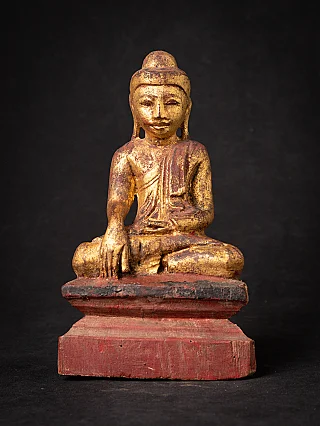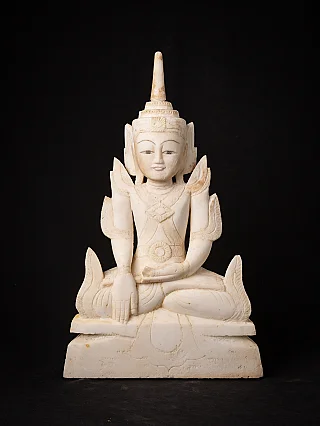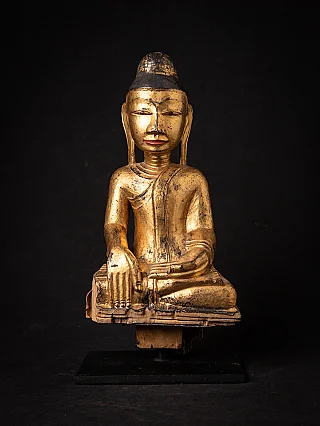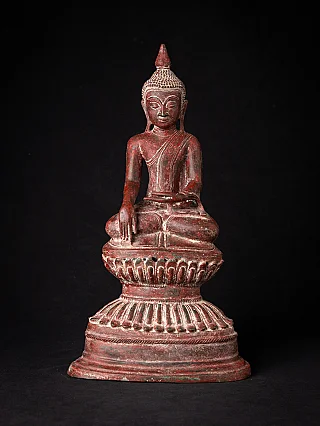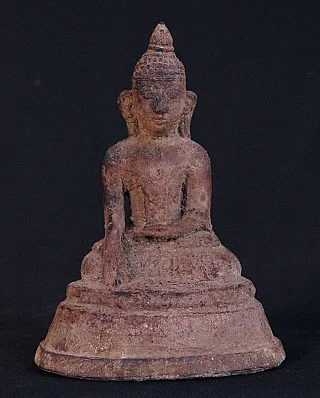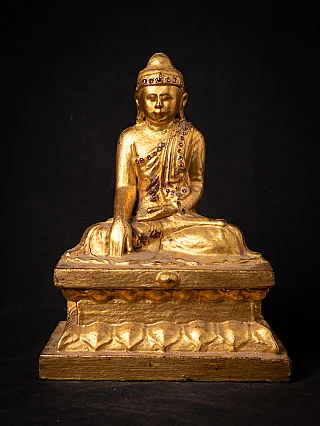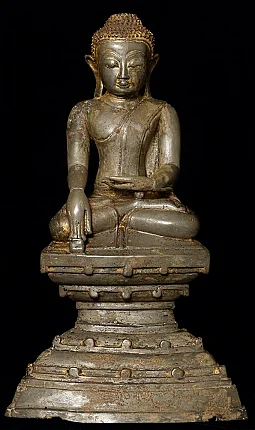Buddhas Crossed Legged Position - Lotus Position
Author : Peter Vredeveld

The Double-crossed legged position is one of the most popular and common postures where Buddha is shown sitting with crossed legs. It is also known as the Double Lotus Position.
Lord Buddha is depicted in myriad poses and postures in Buddhist art and sculptures, each embodying a distinct spiritual message or historical moment from his life. These poses, known as mudras, are symbolic gestures that hold immense significance in the traditions of Buddhism and Hinduism. The repertoire of these symbolic gestures is vast, with over a hundred mudras identified, each varying in terms of body positioning, the involvement of different body parts, and the specific arrangement of hands and fingers.
The art of depicting Lord Buddha in these various mudras is an artistic expression and a medium through which Buddhism's philosophical and spiritual teachings are communicated. Among the most iconic and revered is the cross-legged position, a posture that conveys the essence of meditation and enlightenment. This position is prevalent across various Buddhist traditions, including Mahayana and Theravada Buddhism, showcasing Lord Buddha in deep meditation with his ankles tucked in a manner that represents both physical stability and spiritual balance.
- Double Lotus Position – This depicts Lord Buddha seated with legs fully crossed, embodying a state of deep meditation or Dhyana, suggesting a transcendence of the physical to attain spiritual enlightenment.
- Single Lotus Position – Lord Buddha is shown with one leg resting on the other, symbolizing a more approachable state of meditation, indicating the path towards enlightenment is accessible to all seekers.
Exploring the Double-Crossed-Legged Position
The double-crossed-legged or the double Lotus position is one of Buddhist iconography's most significant and widely recognized postures. This posture, where Lord Buddha sits with both legs crossed and palms resting on the knees is deeply associated with the moment of enlightenment. It is believed to be the pose Lord Buddha adopted during his enlightenment under the Bodhi tree in Bodh Gaya, India. This mudra symbolizes the ultimate realization of inner wisdom, the clarity of mind and body, and the stability of emotions amidst the flux of the physical world.

Another Double Crossed Legged Position variant features Lord Buddha with distinctive hand gestures: the left hand facing upward toward the face and the right hand pointing towards the earth. This particular mudra is known as the Enlightenment Buddha, symbolizing the moment of enlightenment with great character and self-discipline, illustrating the Buddha's mastery over the earthly and spiritual realms.
Diverse Mudras within the Double Lotus Position
Buddhist art captures Lord Buddha in various other mudras while seated in the Double Lotus Position, each conveying unique aspects of his teachings and persona:
- Protection Buddha
This mudra, where Buddha's hand is raised with the palm facing outward, symbolizes protection, courage, and fearlessness. It is often invoked for spiritual shielding against fear and danger, embodying the Buddha's role as a protector of the faith and its followers.
- Meditation Buddha
A portrayal of Buddha in deep meditation, this mudra signifies concentration, peace, and the pursuit of inner wisdom. It is particularly revered by practitioners seeking to deepen their meditation, offering a visual focal point for serenity and mindfulness.
- Teaching Buddha
Also known as the Dharmachakra Buddha, this mudra is depicted with hands held at chest level fingers forming a circle. It represents the setting into motion of the Wheel of Dharma and commemorates the first teachings of Buddha after his enlightenment. It is a powerful symbol of wisdom, teaching, and the transmission of Buddha's insights to his disciples and the wider world.
Embracing the Legacy
The profound legacy of Lord Buddha and his teachings continues to inspire and enlighten individuals worldwide. Studying and appreciating these sacred mudras reminds us of the path to enlightenment, the importance of compassion, and the pursuit of inner peace. These ancient gestures serve as a bridge to the historical Buddha and a timeless guide for practicing mindfulness and living a life in harmony with the Dharma. As we incorporate the essence of these teachings into our daily lives, we honor the enduring wisdom of Buddha and the transformative power of his message.
Share this page


















